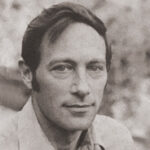by John E. Mack, M.D.
John Mack presented a paper by this name at a conference held May 5, 1984 in Los Angeles by the American College of Psychoanalysts. The paper itself is missing, but a summary of the presentation was printed in that organization’s newsletter. This is that summary.
Summary — Biography and the Clinical Situation: What is Evidence and For What Purpose?
John E. Mack, M.D.
Soon after the emergence of psychoanalysis as a clinical discipline, Freud and his followers began to apply its insights to biography in order to find confirmation outside of the analytic setting of psychological discoveries that were emerging in work with patients. At the same time, the explorations of psychoanalysis have provided possibilities for psychodynamic understanding which have enriched the field of biography as a whole.
The traffic in the opposite direction – the application to clinical psychoanalysis of the forms of evidence used by biographers and an appreciation of the importance of considering a human life in its totality – has been far less extensive. Although there have been exceptions, the use in psychoanalysis or psychoanalytic psychotherapy of diaries, letters, hospital records, photographs, home movies and interviews with family members – sources of data which are the biographer’s stock in trade – to illuminate our patients’ past histories and contemporary struggles, has been relatively sparse.
The reason for this lies, I believe, in a kind of ambivalent attitude toward the place of past history in our patients’ lives that has affected psychoanalysis from its origins. Very early in his use of approaches which uncovered patients’ memories, Freud began to establish a kind of dichotomy between what he later came to call “intrapsychic” reality, which he contrasted with “material” reality. In the seduction theory, which Freud largely abandoned in 1897 (at least for the time, as the power of actual events and deeds in shaping people’s lives regained its importance in later writings of Freud’s), the role of sexual seductions and assaults which had “really happened” were considered to be the determining factors in the creation of his patients’ neurotic disorders. With the abandonment of the seduction theory, the possibility that the traumatic sexual experiences which his young female patients described had actually occurred was largely dismissed. Instead Freud posited that unacceptable wishes and fantasies, derived from powerful instinctual forces, were the pathogenic agents. Generations of psychoanalysts and psychotherapists seem to have felt obliged to take sides, to choose between intrapsychic versus material reality as the relatively more important causal element in the creation of emotional disturbances.
The recent public interest that has surrounded Jeffrey Masson’s indiscreet disclosures of new material from hitherto embargoed Freud archives relates fundamentally to the perception of this relative contempt within psychoanalysis for the power of real trauma and abuse to shape emotional disturbances. For Masson, whatever may be said of his motives or personality, demonstrated that these materials contained evidence of the extraordinary lengths to which Freud was sometimes prepared to go in these early years to attribute an intrapsychic cause to what we now recognize were physically-derived traumatic events. The relative clinical and theoretical disinterest in psychoanalysis toward external or material reality, the suppression of archival materials which might reveal its central importance and the underuse of additional documentary evidence in the clinical setting are, I believe, interrelated phenomena.
Psychoanalytically oriented work with children, post-traumatic stress disorders, and a great range of other troubled individuals, seen in a variety of outpatient settings over the past several decades, has demonstrated the power of real events in the generation of emotional disturbances. Furthermore, it is important, both for diagnosis and treatment, to reconstruct the interplay that has occurred at each developmental stage between actual experience and the psychological adaptations which our patients have made as an outgrowth of these experiences. The dichotomy between intrapsychic and material reality is artificial and destructive.
Patients’ memories, which emerge in the context of the transference, are subject to both psychological and biological limitations. The introduction into the clinical situation of additional forms of documentary evidence (not “extra-analytic,” as their use grows directly out of the analytic or therapeutic work) found to be available to the patient as a result of the therapeutic exploratory adventure can aid immeasurably in the tasks of therapeutic reconstruction and working through.
In this paper[1], I have provided detailed clinical illustrations in order to demonstrate both the potential therapeutic value of such materials and the clinical errors which can result from the failure to make use of them. I am seeking in this study to overcome the limitations for our field that derive, I believe, from treating the psychoanalytic clinical setting as a closed evidential system.
[1] The paper itself, “Biography and the Clinical Situation: What is Evidence and For What Purpose?”, has not been located in Mack’s archives but is believed to have been an updated version of his 1980 paper, “Psychoanalysis and Biography: Aspects of a Developing Affinity”.
 John E. Mack, M.D. was a Pulitzer Prize-winning author and professor of psychiatry at Harvard Medical School.
John E. Mack, M.D. was a Pulitzer Prize-winning author and professor of psychiatry at Harvard Medical School.
© 1984 John E. Mack, M.D.
This summary was originally published in The American College of Psychoanalysts Newsletter, Vol 16, No 1, Spring 1985, pp. 2-3, as part of a report on the organization’s symposium held May 5, 1984 in Los Angeles.